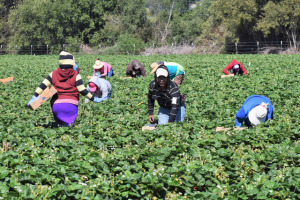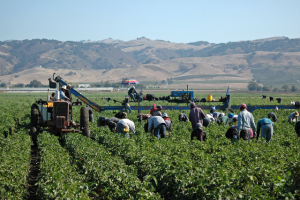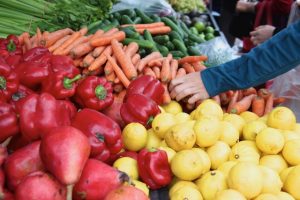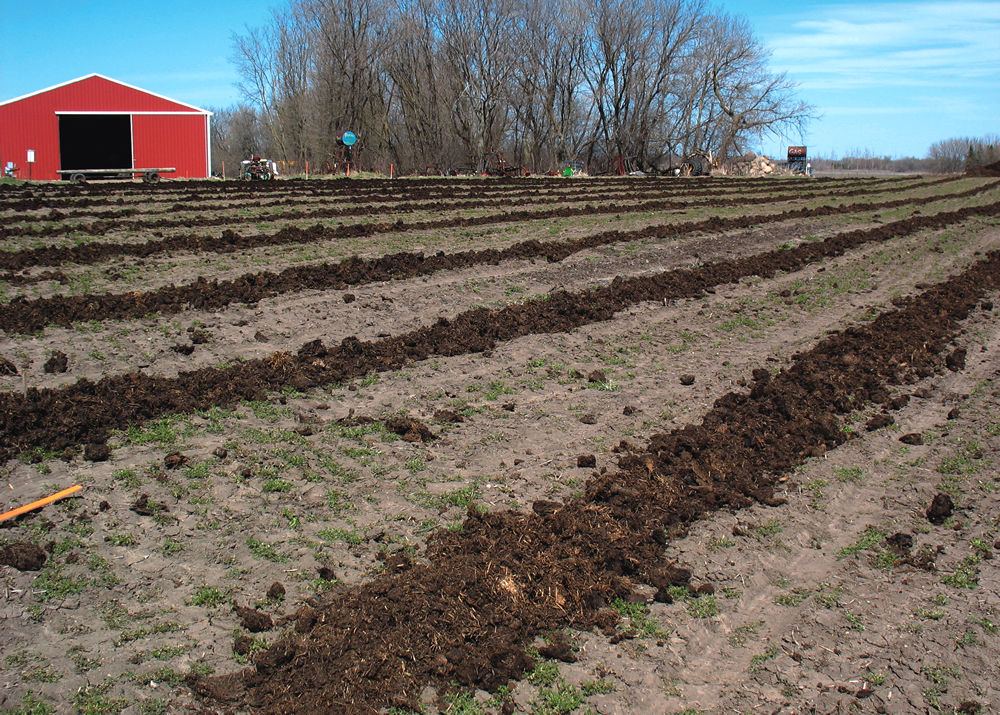
Earth Day Begins with the Soil
April 22, 2015 Roots of Change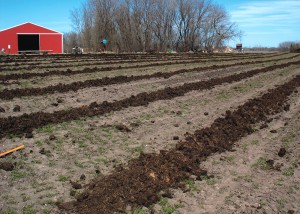
- Photo source: biocycle.net
Earth Day is about saving the earth. But this Earth Day the future could seem a bit bleak. Global warming – with its epic California drought – and the collapse of Honey Bee populations are two of many serious environmental crises before us. But in both of these challenges ROC sees opportunity for farmers, ranchers and the sustainable food movement to join hands and work together. Soil is a fundamental link between these two crises and one action related to the soil can help fix multiple problems.
As we now know, whether for almonds, beef or carrots, water is needed – more than most of us ever realized. Crop thirst has been fodder for oodles of media stories condemning farmers, particularly those who grow almonds. We’re encouraged by the recent coverage that goes deeper into understanding the challenge of managing our water wisely. Some quality news sources seem to be getting past the blame game and simplistic critique and into the complexity and reality that must be understood to make progress.
Still, we believe that the struggle over water is a less constructive struggle than others we could have. If we must struggle (and we think it is very human to do so when seeking change), let us struggle over how to make agriculture deliver even more ecosystem services that will ensure the health and resilience of California. ROC worries more about the loss of plant diversity than about the use of water in almond orchards. Without plants, bees starve. Because plants are made of carbon, any field without cover crops, hedgerows and/or riparian zones is also a lost opportunity to capture carbon as well as to fix nitrogen in the soil. The fewer nitrogen-fixing plants, the more synthetic nitrogen fertilizer a farmer needs. The more fertilizer used, the larger the volume of volatile nitrogen leaks into the atmosphere, increasing global warming, exacerbating the drought. It’s all connected.
A critical struggle that will help get to the root of the problems before us is to push policy makers to increase the budget for research based on agroecology. Money should be used for research inside as well as outside the University of California Cooperative Extension Service, an institution that helps farmers to innovate. Let’s make sure there is more money for on-farm experiments in which farmers and ranchers participate so that they can become the engine for inspiring their colleagues to follow suite.
We’d love to see an effort to develop an almond cropping system that does not require the elimination of plant life on the floor of California’s nearly one million acres of almond orchards. Almond growers and the food movement could work together to create incentives for reintroducing plant biodiversity into orchard systems using cover crops, hedgerows and alternative tilling and harvesting systems. And it’s doable because many organic almond producers are already doing it. The bees would certainly benefit from more blooming plants in the orchards.
Such an effort would synergize beautifully with Governor Jerry Brown’s Inaugural Address in January when he mentioned the role of agriculture in capturing carbon. It would also align with comments by California’s Department of Food and Agriculture Secretary, Karen Ross, who stated to the ROC team last summer that building soil is among the farmers’ and ranchers’ best method to build resilience in the face of the West’s warming and drying climate. As this video shows, when the water arrives from storms or irrigation, healthy soil captures and retains more of it for longer periods by allowing deep infiltration. More plant diversity will improve soil, bring back bees, fight global warming and stretch our available water. That’s a win, win, win, and win!
So our hope on this Earth Day is that the food movement, led by its environmental wing, can join with traditional agriculture organizations like Farm Bureau and Western Growers to struggle over budgets with policy makers in order to create an historic soil building campaign in California that might just inspire the rest of the nation and ensure agriculture has a future in the drying West. And there are a couple of great proposals working their way through the California Legislature right now.
